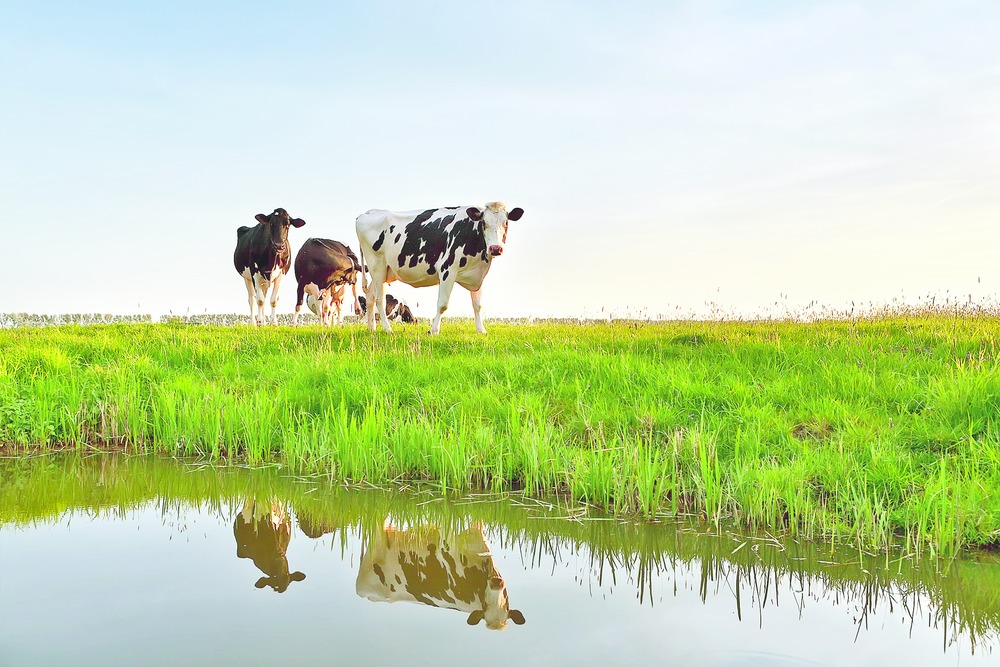
Here is something worth ruminating on - the genetic make-up of the cow may not be as "pure" as we think. A recent study of the bovine genome has found that wild aurochs continued to mate with their domesticated cousins even thousands of years later. Till now biologists had presumed that once domesticated, cows had mated only with their own kind. The first taurine cows were domesticated from aurochs or West Asian wild oxen.
The new revelation calls into question the prevailing theories of cow domestication, which presumed that all modern cow breeds emerged mainly from conscious crossbreeding or hybridisation of two species - taurine ( Bos Taurus) and zebu (Bos Indicus). The last few centuries saw a concerted effort by cattle breeders to raise breeds that give better and more milk and meat, apart from helping them to adapt to prevailing environmental conditions.
The latest study by a team of Irish researchers led by David MacHugh of Animal Genomics Laboratory at University College Dublin, however, found strong evidence for gene flow from wild ox relatives, which they believe would have happened much after the domestication of cows. The study appears in the journal Genomic Biology released today.
According to archaeological studies, taurine cows were first domesticated (from West Asian wild oxen or aurochs) in the Fertile Crescent, a region that covered modern day Iraq, Jordan, Syria and Israel, nearly 10,000 years ago. The domestication of humped zebu cows subsequently happened in the Indus Valley civilization nearly 3,000 years later. Scientists believe that the genomic analysis of cattle, which hasn't been attempted yet, may be able to pin point the timing of domestication.

Early farmers, who moved to different continents, took the bovines along with them and crossbred through lengthy and complex processes, giving rise to breeds that subsequently adapted to local conditions. Previous studies have shown that European taurine cows are descended from western Asian populations of aurochs. However, little was known about the relationship between domesticated cattle and wild aurochs in Europe, and how wild populations contributed to the evolutionary history of the cows that exist today.
This crossbreeding could have been inadvertent, but it is also possible that early farmers in Britain may have purposefully restocked their domestic herds from wild aurochs populations, a release from the researchers said.
British aurochs were hunted into extinction some 3,000 years ago. Standing six feet tall at the shoulder and weighing more than a tonne, aurochs were giant wild cattle that roamed the plains of Europe for thousands of years. The last recorded aurochs died in Poland in 1627.
For the study, the scientists first successfully reconstructed the genome sequence from an auroch that roamed the British Isles. For this they extracted genetic material from a 6,750-year-old bone ( see inset pic) discovered in a cave in Britain. "This is the first ever complete genome sequence from a wild ancestor of cattle," says MacHugh.
"Our results, based on analysis of a complete aurochs genome and genetic data from more than 1,200 global cattle populations, suggest a more complex model of cattle domestication where domestic cattle interbred with wild aurochs as they encountered them in new habitats such as Britain," says MacHugh.
This led them to the conclusion that the gene flow from wild aurochs in Britain significantly shaped the genetic composition of certain breeds of modern British and Irish cattle in contrast to breeds from mainland Europe.
"This could be true in cattle populations in other parts of the world, but needs to be tested with auroch genomes from elsewhere," MacHugh told KnowHow.
This actually reveals a far more complex picture of cattle domestication than previously thought.
"I often wonder if the mixture of domesticated cattle and wild aurochs was the most direct path to cattle that were genetically adapted to local environments, like the Ivory Coast of Africa or Highlands of Scotland," says Jared Decker, assistant professor of animal science at the University of Missouri, in the US.
In a study published in PLoS Genetics last year, Decker and his colleagues showed that genetics of African cattle breeds are similar to those domesticated in the Fertile Crescent, proving that those cattle were brought to Africa as farmers migrated.
European, Asian and African taurine breeds all share the same domestication process. But, African history becomes more complicated as the cattle domesticated in the Fertile Crescent mixed with wild auroch in Africa, points out Decker.
This admixture of genes is however not without benefit. This may have played an important role in the evolution of these livestock, perhaps through the introduction of desirable traits that helped early domestic cattle to adapt to new environments, MacHugh says.
Decker hopes that advances in ancient DNA research that continue to emerge may help get a clearer picture in future. "The cost of sequencing a million base pairs of DNA has fallen from over $5,000 in 2001 to less than 2 cents. Combining ancient DNA extraction improvements with decreased sequencing costs will continue to improve our understanding of the history of not only our own species, but also the history of agriculture species that made modern culture possible," he says.










